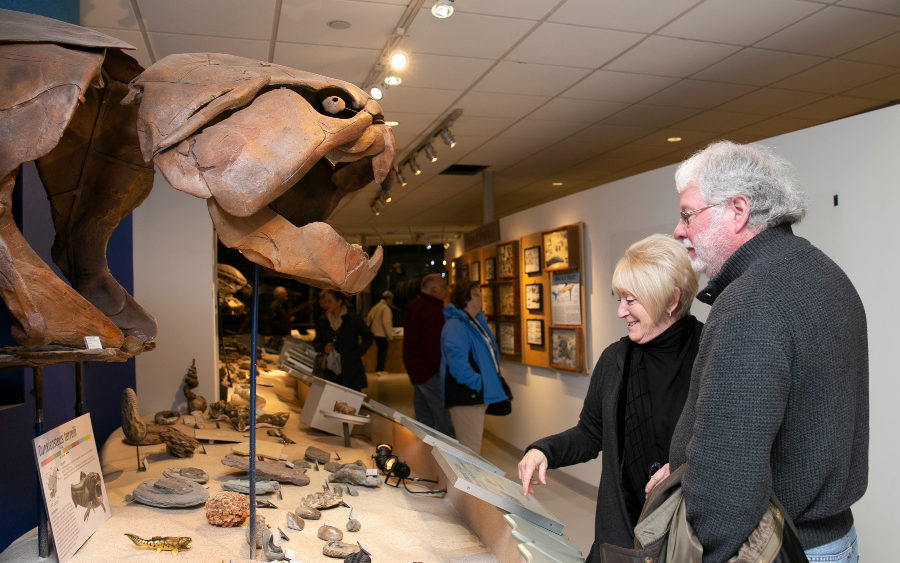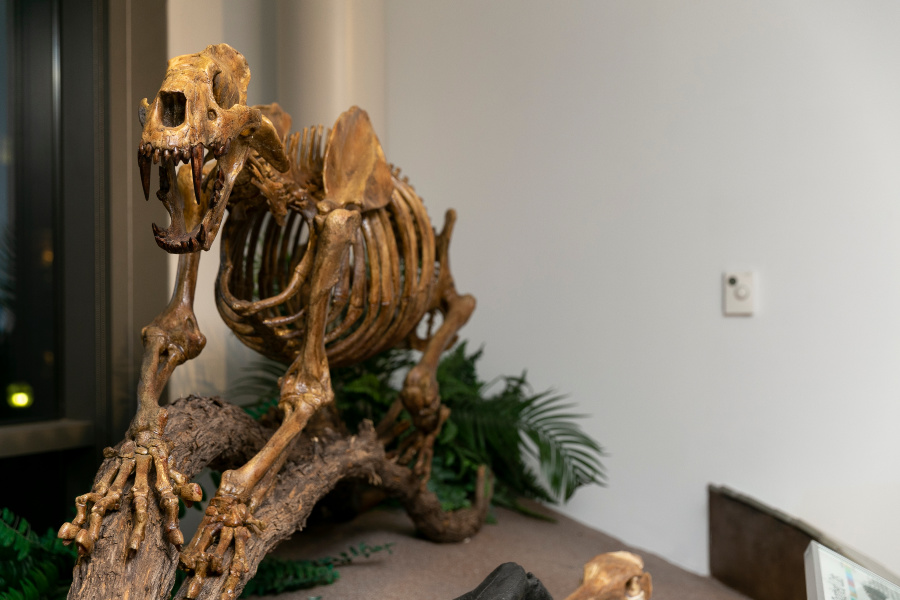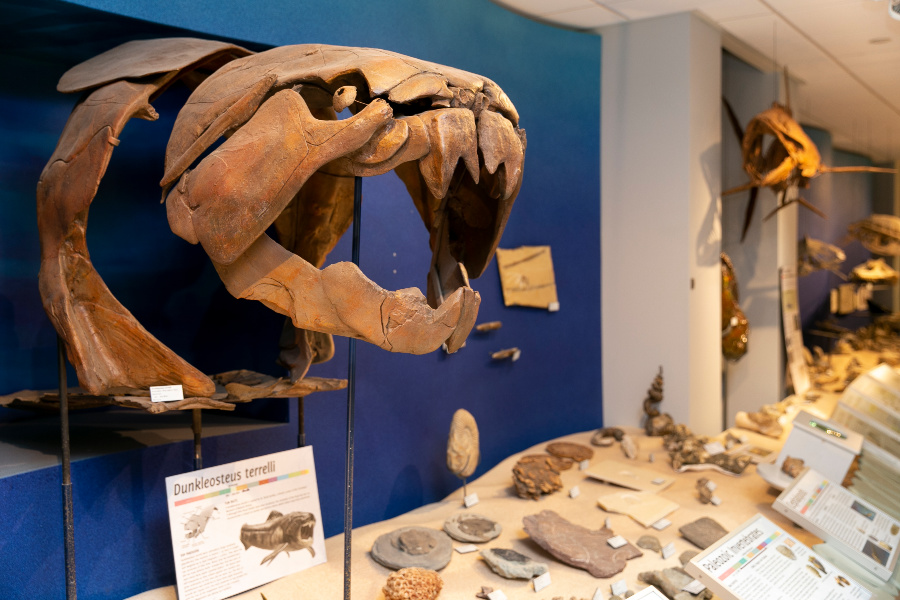On Wednesday, January 16, 130 guests filed into the College of Charleston School of Science and Math lecture hall. Having just toured the Mace Brown Museum of Natural History, guests were already filled with questions and eager to learn from real-life paleontologists, Sarah Michalies, Collections Manager at the Mace Brown Museum of Natural History and Dr. Bobby Boessnecker, Director of Marine Vertebrate Research.
Sarah and Bobby have made careers of solving mysteries of the past. Both were inspired to enter this field because of childhood experiences. Bobby recalled being an avid shark tooth collector while growing up in California. He used to have birthday parties at Half Moon Bay. Here, the sandstone cliffs were teeming with whale bones and thick fossilized sand dollars…and no one was studying them. Bobby applied for a permit at age 18, and began to remove, study and name ancient whales. Growing up in Montana, Sarah would escape the harsh winters by visiting the Montana State University Museum. This facility specializes in showing how fossilized specimens change with age and growth. Since then, their studies have taken them around the world from California to Montana to New Zealand and finally to South Carolina.
This travel proved that the best Oligocene (33.9-23 million years ago) marine mammal specimens are found in New Zealand and right here in Charleston, South Carolina. Mentored by one of the last classically trained paleontologists, Dr. Robert Ewan Fordyce, Bobby learned about fossil photography, casting, comparative anatomy, fossil preservation and how to be resourceful.
“It’s not like what you see in the movies,” smiled Bobby. “There isn’t a field of students slowly brushing a specimen.”
Bobby and Sarah learned to use large power tools like jackhammers and chainsaws to remove as much of a fossil as possible with a small team. Sarah remembered a time when she was removing a large dinosaur bone in Montana and needed to use an old car hood to support the structure. A powerful winch broke in the process. The team had to hike back down the rough terrain to repair the winch and try again.
Fossil extraction in the Carolinas is much different. Fossils are often found in canals and construction sites by peering through a Pyrex dish underwater and sifting through the mud. One of the most memorable discoveries from this past summer was a sulidae skeleton. Modern day members of this bird family include gannets and blue-footed boobies.
In 2017, the discovery of Coronodon havensteini or the “Wando Whale” made headlines. This species swam around South Carolina approximately 30 million years ago. They weren’t using their saw-blade teeth for chewing or tearing food, but instead are one of the earliest transitional feeders, using these teeth to filter small food from the water. Other extraordinary discoveries include the smallest cetacean ever discovered, Inermorostrum xenops, an early toothless dolphin that relied on suction feeding, and Genus Y, the “killer whale of the Oligocene” that is currently being studied. The design of skeletal structures provides modern day researchers with information about the unique feeding methods and movements of extinct animals. For example, walruses like Ontocetus emmonsi used to live off the South Carolina coast; that’s right — walruses here in the Lowcountry! The lack of orbital eye sockets shows researchers that they could force their eyes out, helping them to see when feeding.
To see these specimens and learn more, please visit The Mace Brown Museum of Natural History. The museum is open from 11 am-4 pm daily, except Wednesdays, and is free to tour.
Thank you to our sponsors Mary and Mason Holland and the College of Charleston.





